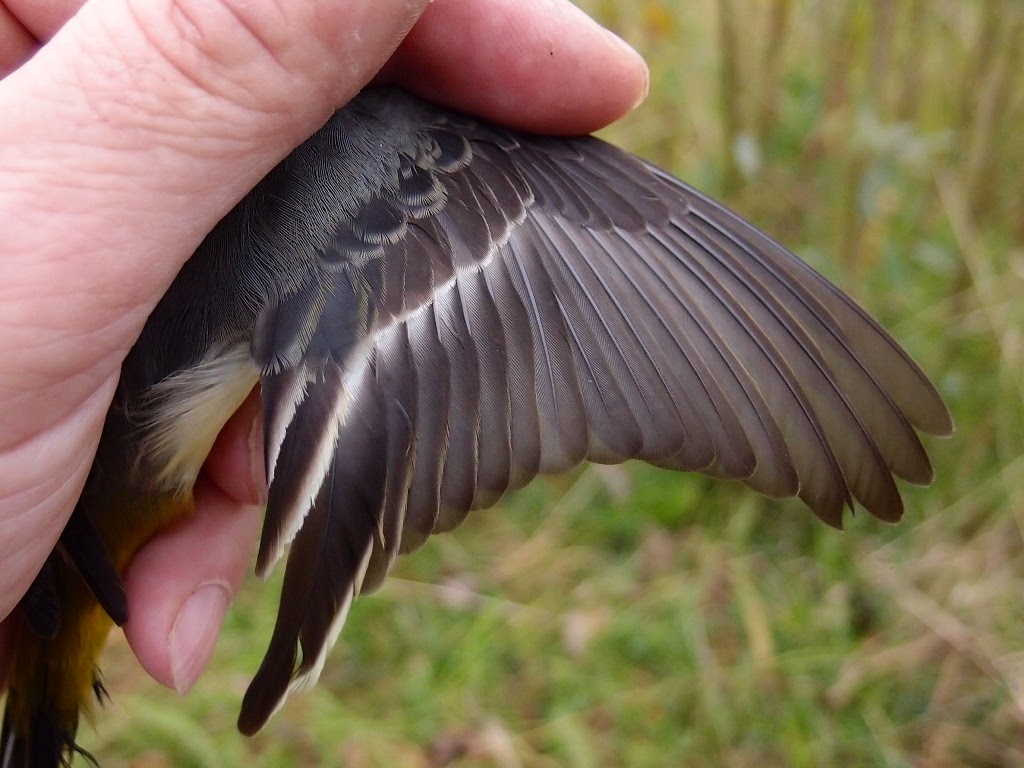 |
| Another fine ringing day with the sun peeping between the clouds shortly after sunrise at Billinge this morning |
 |
| The first Lesser Redpoll of the autumn. Many more should pass through the site over the next few weeks. |
 |
| All the primaries are fresh and glossy looking with no chips or frayed edges. |
 |
| This adult has fairly pointed tail feathers but they are all fresh with very little wear. |
 |
| All the primaries are fresh and glossy looking with no chips or frayed edges. |
 |
| This adult has much more rounded tail feathers that are normally associated with an adult and again they are all fresh with virtually no sign of any wear. |
 |
| The primaries of this first year bird are less glossy (look drier and slightly paler than the adults) with the tips and edges being moderately worn and chipped in places. |
 |
| This first year bird hasn't replaced any tail feathers and all are quite pointed and worn. |
 |
| The primaries of this first year bird are less glossy (look drier and slightly paler than the adults) with the tips and edges being moderately worn and chipped in places. |
 |
| This first year bird has replaced all but one of the tail feathers with the new feathers being fresh and more rounded like those of an adult. |
 |
| Wing tip detail of the four birds above for easier comparison of the differences in the wear between first year birds and adults in autumn. |
Ringing totals for 30/09/14
Goldfinch 9
Linnet 7
Lesser Redpoll 2
Chaffinch 1
Reed Bunting 2
Yellowhammer 1
Blackcap 4
Chiffchaff 4
Goldcrest 2
Great Tit 1
Total 33









































